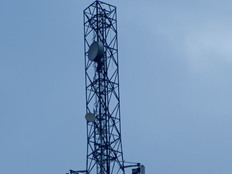The Moon Connects to the Internet at 622 Mbps
Delaware is home to America’s fastest average Internet speed, which clocks in at 10.88 megabits per second (Mbps). Compared with other nations, the United States lags behind in Internet speed. And now, thanks to an orbiting satellite, even the moon has a better connection than most American households.
A partnership between NASA and MIT known as the Lunar Laser Communication Demonstration uses lasers to send data back and forth to the moon. The fastest speed they have been able to achieve is a stunning 622 Mbps.
According to IEEE Spectrum, the success of this technology so far has major implications for space research:
The laser link exceeded the NASA and MIT engineers’ expectations. It achieved error-free communication when the moon was high in the sky, when it was low (albeit at a lower, 311-Mbps, data rate), when it was near the sun, and when the atmosphere was turbulent. It even worked through thin clouds, an unexpected bonus since clouds are the Achilles’ heel of laser communications.
Space scientists want to be able to receive hundreds of times more photographs and measurement data, and even high-definition videos, from probes sent to other planets. Not only are radio links too slow for that, they also need antennas that can be bigger than the spacecraft themselves. Laser systems are much smaller and could be up to 100 times as fast. Deep-space laser communication could also someday enable high-bandwidth communications with astronauts who go beyond the moon.
“Suppose you wanted to make a Google maps image of Mars,” Boroson says, “and not even as crisp as Google maps. It would take decades to send that much data back with radio systems we have now. If you had a laser communication system with a 50-times-higher data rate, it would take tens of weeks. Then you could send all the data for a Google map in one year.”
Traditionally, space-communication technology has been a real challenge, especially for deep-space travel. As we published in How Fast Is the Internet on Mars?, downloading a single episode of Breaking Bad would take more than 13 hours. (Editor’s note: That’s simply unacceptable.) The video below explains how this technology works and what impact it could have on space research.







